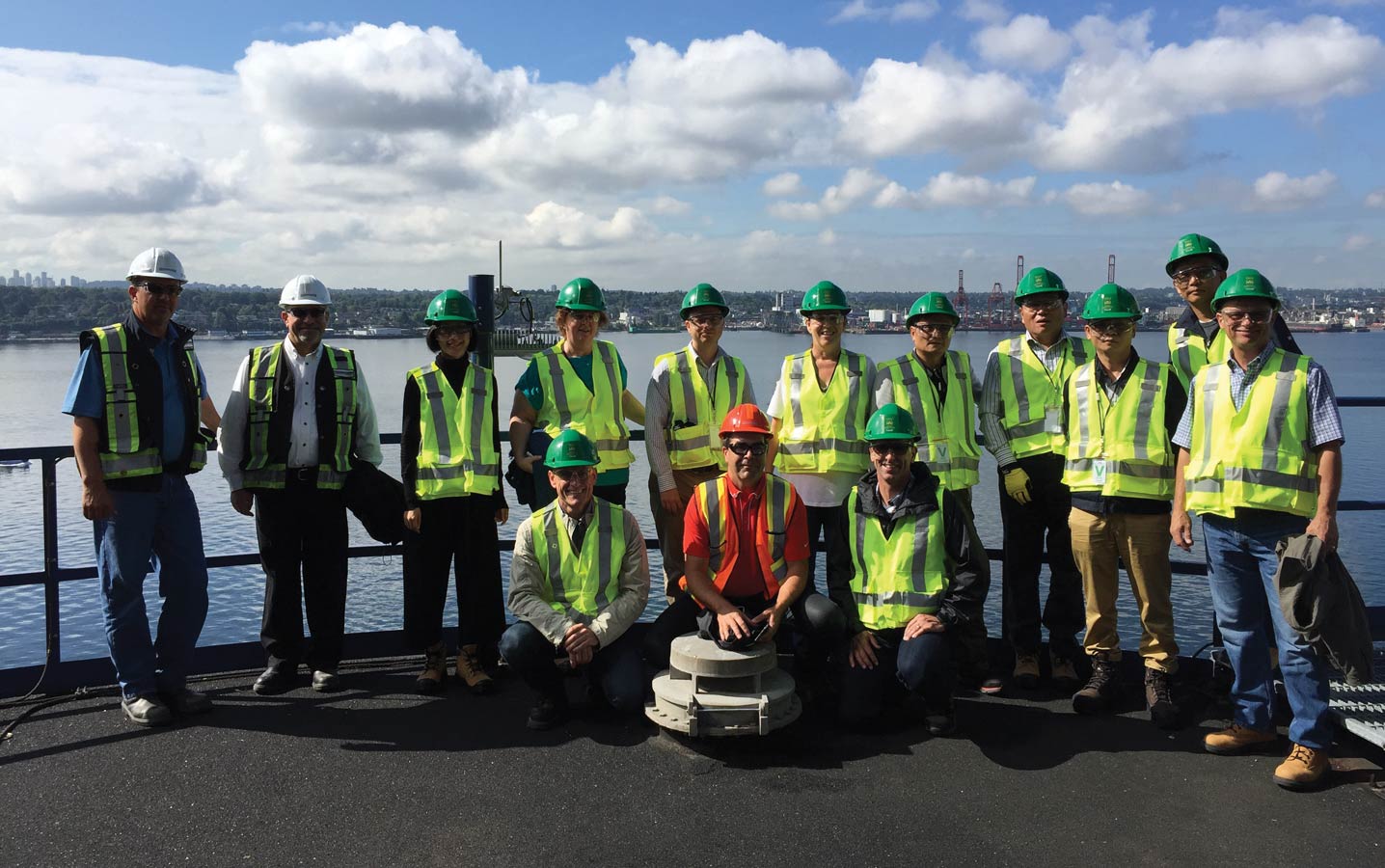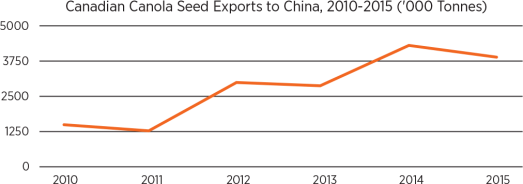Looking back at the China trade dispute
It’s a feeling growers know all too well: Just when things seem to be going so well, suddenly, they aren’t.
That’s how we felt in January 2016 when the Canola Council learned that China, one of our biggest customers, was planning to impose severe dockage restrictions on canola imports.
The news came after years of good trade relations with China. Sales were excellent, driven by increasing recognition of canola’s superior value over traditional rapeseed. Cooperation was high, too. For three years, our two countries had worked together on several research projects demonstrating canola’s many advantages.
It was a gruelling process – requiring over half of my time as president, as well as a significant time investment by our crop production and government relations teams.
Why, then, was China suddenly insisting on maximum dockage of one per cent, less than half the standard level for canola shipments in markets around the world?
At the time, China said the dockage cap was aimed at preventing the spread of blackleg from Canadian canola seed to its domestic rapeseed crop. Blackleg transmission is a genuine concern, respected and shared by our industry.
However, China’s position was not supported by scientific evidence or practical experience. Research had already shown that dockage level has no significant impact on the risk of blackleg transfer.
In subsequent months, there was much speculation about why China took this position, and the reasons may never be entirely clear. But as we look back at the events of 2016, we can clearly see how the efforts of the Canola Council and our allies led to a successful resolution of these issues, at least for now.
While it was a marathon undertaking, we emerged from this dispute with a renewed commitment to science-based rules that will help us deal with future market access challenges, whether they are related to blackleg or the many other complexities of international trade.
The roots of this dispute
This latest period of uncertainty began last January, but in fact, the canola industry has been dealing with blackleg-related issues in China for seven years. In 2009, China temporarily blocked imports of canola when Canadian and Australian shipments tested positive for blackleg, which raised concerns about potential spread to China’s domestic rapeseed crop.
Since then, researchers and government officials in both countries have collaborated on millions of dollars’ worth of research to better understand the disease and how to manage the risk of transmission. In addition, we agreed that canola exported to China would be delivered only to processing plants far from rapeseed-growing areas, which has virtually eliminated the risk
of transfer.
With these measures in place, China soon became one of the biggest buyers of Canadian canola seed, with annual sales of up to four million tonnes.
The long road to resolution
When China announced its intent to restrict dockage, months of intense technical discussions followed. The group working on this issue included the Canola Council’s senior staff, the Canadian Food Inspection Agency, Global Affairs Canada, Agriculture and Agri-Food Canada’s Market Access Secretariat, board members, research scientists and other industry partners. All contributed their expertise as we presented powerful evidence that China’s concerns were not supported by science.
It was a gruelling process – requiring over half of my time as president, as well as a significant time investment by our crop production and government relations teams.
By March 2016, we were able to convince China to delay the original deadline for the dockage reduction from April 1 to September 1 so that we could continue our discussions. But even after this extension was in place, we encountered difficulties. At one point in May, eight shipments of Canadian canola were denied entry to China because of documentation issues. With the help of the Government of Canada we were able to achieve a common understanding of the required documentation, allowing $250 million worth of canola to finally be unloaded at port.
In the midst of all this activity, some media commentators wondered aloud whether the effort was worth it. Why weren’t we just complying with China’s dockage demands? After all, isn’t the customer always right?
(Click image to open in a new window)
In this case, we knew we couldn’t let the demand go unchallenged. Our grain handling system would not be able to sustain a one per cent dockage level over the long term because it would drive up costs and drive down efficiency without adding any value. Going along with a demand not based in science would have set a precedent that could damage not just the canola industry, but our entire agri-food sector.
The Canola Council helped to end the blackleg quarantine of 2009 and clear the way for steady growth in canola seed exports to China. After another blackleg-related dispute in 2016, Canadian canola is once again flowing into China.
By July, we were making more encouraging progress. We hosted two delegations from China, including one group that spent two weeks touring Canada’s elevator and grain-handling system, and another group involved with additional research on dockage.
As the September 1 deadline drew near, the trade dispute was our constant focus. In August, I made two trips to Beijing with Canadian government representatives and was in daily discussions with officials from both countries.
Government intervention
By late August, we had put all of the necessary pieces in place to move past this deadlock. We had leveraged the findings of our research, enabled the Chinese to do first-hand inspections of our facilities and built a deeper understanding of the facts among government officials.
But China’s position was entrenched and the Chinese government’s complex and evolving power structure made the issue difficult to resolve. Officials would not completely abandon the new dockage requirement until the intervention of Canadian government officials at the highest level. We were able to break through the impasse with the direct involvement of International Trade Minister Chrystia Freeland and support from Agriculture Minister Lawrence MacAulay.
At the start of Prime Minister Trudeau’s first official visit to China on August 31, Canada achieved a commitment from China to once again delay the dockage requirements while both countries continued to work towards a solution. While this meant the restrictions would not come into effect on September 1 as China had planned, there was still no long-term solution.
Intense discussions continued on a daily basis until finally, on September 22, Prime Minister Justin Trudeau stood alongside Chinese Premier Li Keqiang at a press conference in the Parliament Buildings in Ottawa, and announced that trade of canola would continue while both countries continued to cooperate on science-based risk management.
Not over yet
Despite our collective sigh of relief when the agreement was announced, we aren’t done yet. The agreement signed on September 24 guarantees that we can continue to export canola to China under the same terms that were in place before this dispute began. But that agreement expires
in 2020.
In the meantime, we need to keep working toward a long-term solution based on science. We are continuing to deepen Chinese officials’ understanding of blackleg and are completing ongoing research on blackleg. Here at home, we are working with farmers to reduce the incidence of blackleg by facilitating proper rotation of the blackleg-resistant genetics now available. Life science companies are continuing to develop new resistant varieties.
All of this work benefits Canadian canola producers, as well as our prospects in the marketplace.
So what have we learned?
Looking back, it’s clear that this dispute was about a lot more than dockage and blackleg. It was about the larger need to have a science-based, mutually respectful and stable relationship with one of our largest customers. If we wish to continue building on this relationship, we need to get the ground rules right. The future of our industry depends on it.
The events of 2016 reminded us that the path forward is the same today as it has always been. We need to stay focused on the guiding principles that have served this industry well for so many years, including the pursuit of science-based policies.
As we pursue this goal, our most powerful tools are partnership, persistence and sound scientific evidence. When we can leverage these three factors, we can overcome the most difficult barriers – even when they are posed by a nation as large as China.






